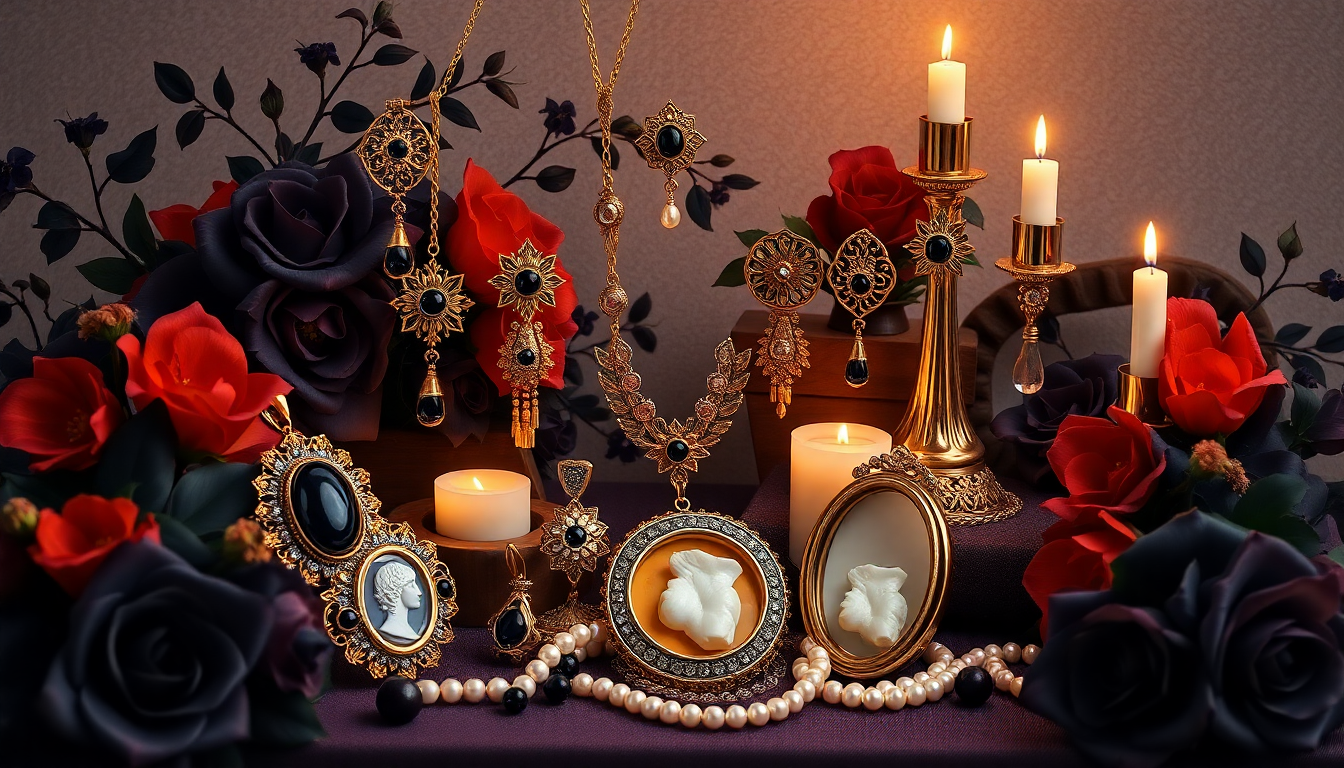The Elegance of Remembrance
The Victorian era, known for its strict social codes and conflicted relationship with death, gave rise to an especially fascinating tradition: mourning jewelry. These intricate and deeply sentimental pieces were not just accessories but embodied a profound cultural practice.
The Art of Mourning
During Queen Victoria’s reign, especially after the death of her beloved Prince Albert in 1861, mourning customs reached new heights of ritualization. Mourning jewelry played a pivotal role by allowing the bereaved to externalize their grief while adhering to societal expectations.
- Black Enamel: Black was the color of grief, and many pieces featured black enamel, often combined with gold to symbolize purity.
- Jet and Bog Oak: Jet, a fossilized wood, was particularly prized for its deep black hue and lightweight nature. In Ireland, bog oak was a popular alternative.
- Hairwork: Incorporating the hair of the deceased into jewelry was common. Hairwork could be woven into intricate designs or placed in lockets.
Stories Woven in Gold and Jet
These pieces often held deeply personal stories, transitioning from mere jewelry to precious heirlooms infused with memories.
One poignant anecdote tells of a Victorian mother in mourning. She received a brooch containing a lock of her child’s hair. To her, the brooch wasn’t just an accessory; it was a tangible connection to the one she lost.
Having these mementos allowed individuals to carry their loved ones with them, offering solace in the midst of sorrow.
Symbolism Carved in Elegance
Mourning jewelry was adorned with intricate symbols, each carrying its own significance.
- Willow Trees and Urns: Willow trees symbolized sadness and lamentation while urns represented the soul’s departure.
- Angels and Doves: Both symbols signified peace and eternal rest.
- Forget-Me-Nots: The flowers, often enamelled in blue, represented remembrance and undying affection.
These symbols were not chosen haphazardly; they were a language in their own right, enabling Victorians to express grief in an era when emotions were often constrained.
The Societal Impacts
The strict mourning practices served not only a personal purpose but also acted as social signals. Victorian society was keenly aware of appearances, and wearing mourning jewelry conveyed that the individual was adhering to prescribed norms.
Queen Victoria herself set the standard, mourning Prince Albert for 40 years and making black attire and mourning jewelry de rigueur for much of her reign.
This societal expectation created a thriving market for mourning jewelry, with skilled artisans dedicating their craft to these somber yet beautiful pieces.
From Tragedy to Trend
While mourning jewelry started as a sincere expression of grief, it evolved into a broader fashion phenomenon. By the late Victorian period, the aesthetic crossed over to mainstream fashion, influencing designs in non-mourning contexts as well.
Items like lockets, brooches, and rings began to feature mourning motifs even for wearers not in mourning, due to their intricate beauty and symbolic depth.
“The wearing of a jet bracelet no longer exclusively means mourning,” reported an 1887 fashion journal, highlighting this evolution.
Modern Resurgence
Although the era of strict Victorian mourning rituals has long passed, the allure of mourning jewelry persists. Collectors and history enthusiasts are captivated by these antique pieces. They offer a tangible connection to the past and a window into the nuanced and richly symbolic language of another time.
- Antique Shops and Auctions: Mourning jewelry often appears in antique shops and auctions, fetching significant prices due to their historical and emotional value.
- Museums: Many museums feature exhibitions dedicated to Victorian mourning practices, including these intricate pieces of jewelry.
The Timelessness of Mourning Jewelry
Today, mourning jewelry serves as a poignant reminder of a time when grief was worn openly and intricately. These pieces are not just relics of the past but also testaments to the enduring human need to commemorate loss and celebrate memories. Whether displayed in museums or treasured in private collections, Victorian mourning jewelry continues to captivate and evoke a deeply emotional resonance, reflecting the timeless human connection to loss and remembrance.
Through their intricate designs and heartfelt materials, these items remain a fascinating blend of art, history, and personal narrative, ensuring their place in the annals of both fashion and social customs.
